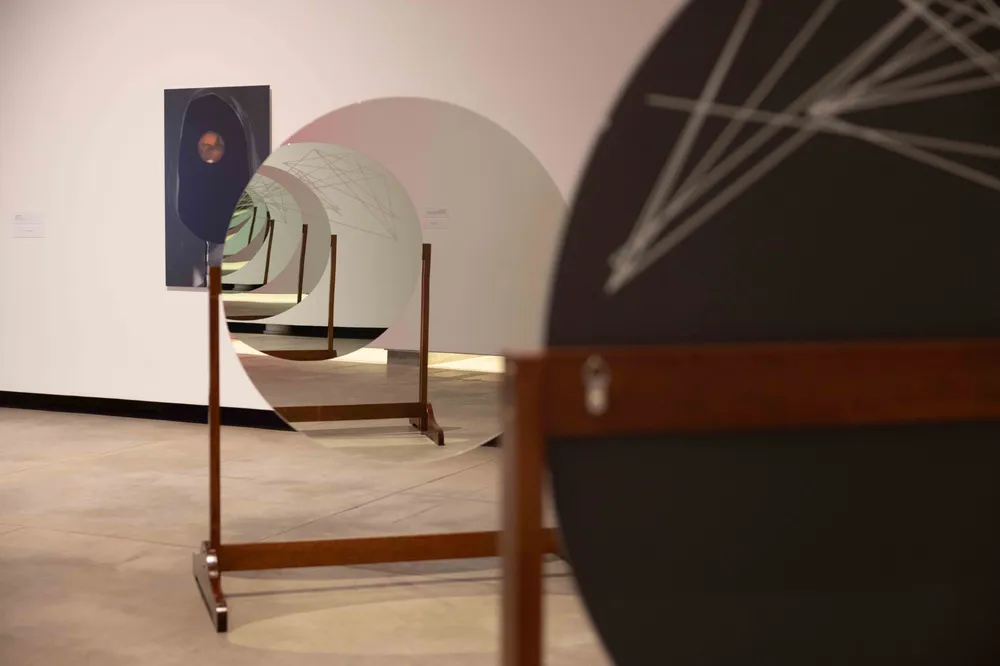For your sake and the sake of all fine artists currently displaying work at the Belkin, I hope you’ve avoided the official introductory blurb to the gallery’s latest exhibition, Aporia (Notes to a Medium). Labyrinthine and grandiose, the text stares you in the face and dares you to parse it — no art until you’ve done your homework.
I have no doubt that those few paragraphs, and ones just like them shackled to previous exhibitions, have turned countless curious first-years and casual mailing list subscribers from the Belkin’s doors like bandits demanding a fun-toll.
But I’ve got a secret for you, so come in close. Are you ready? Here it is: You don’t have to read those.
That’s right. The receptionist isn’t going to quiz you on the way in; the gods of art won’t smite you for your lack of diligence. You can just open the door, wave a friendly hello and avert your eyes from the dreaded summary’s 36-point reproduction on the adjacent wall as you walk on by. And in the case of an exhibit like Aporia, that’s exactly what you should do.
It’s loosely organized around concepts of faith and its manifestations. Elizabeth Zvonar’s “Timing is Everything” consists of two mirrors placed parallel to one another, forming an endless corridor of reflection between them, interrupted only by your own image and two astrological patterns printed on each of their surfaces.
Three plaques on a nearby wall reveal these patterns to be the birth charts of the two Voyager space probes launched on August 20 and September 5, 1977.
Voyager 1 and 2 are currently hurtling away from us, each already at a distance of around 20 billion kilometres. They are forecasted to reach the outer boundaries of our solar system in 14,000–28,000 years, but no one can truly be sure of their eventual fates. Zvonar focuses on the existential implications of this uncertainty, summarizing her conversations with mediums, priests and other faith-based practitioners on the subject.
Jenine Marsh’s “How to Fulfill a Wish” brings faith back to earth with its focus on the wishing well. Three large, circular sculptures line the floor and walls of Marsh’s section, evocative of fountains with their sculpted rims and two plaster feet standing on pedestals at their centres, lined with coins.
In her talk at the exhibition’s opening reception on January 11, Marsh spoke on the legacy of the wishing well as an article of faith, a locus of community and a symbol of power. She brought up the forsaking of currency (either by tossing it in a well or incorporating it in art as she does) as a conceptual and literal rejection of the principles of capitalism in favour of hope, faith and a wish.
“Solar Evocation,” Azza Siddique’s sculptural repositioning of the ancient Egyptian funereal text The Book of Two Ways, stands in a darkened room at the far end of the Belkin’s main hall. Passages from The Book of Two Ways are projected in a loop on the walls. The floor is covered by a layer of clay and lined with shattered pottery and long, horizontal rectangles. The piece gives the impression of the foundation of a building, either exposed by ruin or in the first stages of construction.
In her own talk, Siddique said that this cyclical pattern of past and future, destruction and creation, was a key interest in her studies of ancient Egyptian and Nubian culture. “Solar Evocation” brings the viewer into contact with a new and possibly unfamiliar form of faith.
Share this article
First online






